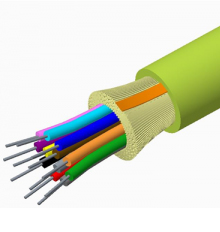OM5 Fiber–A Trend for High Speed Data Center?
As the bandwidth demand continues to increase inside the data center, OM5 fiber was created to improve the reach of emerging multi-wavelength technologies like 40/100G SWDM4 and 40GBiDi, will it be a trend option for the data center?
Basic details about OM5:

- OM5 is designed for performance not just at 850, but across the range from 850 to 953 nm, allows multiple wavelength transmission on fiber
- Supporting 400G operation using the same eight fiber technology. It extends the longer distance than OM3 and OM4 fiber
- Reduce fiber count for 40G/100G connection, with SWDM technology, less fiber to be used especially in narrow space.
- Compliant with other types MM fiber, but not support the existing optical transceivers installed in the data center(note: source from http://optics.org/products/P000021637)
OM5 is industrial standardized product high speed oriented as another option for data center cabling solution and has proponents in the industry. However, reality shows how it is going.
Per the recent LEVITON blog shows regarding the willingness to use OM5 fiber for future growth, only 2% choose OM5, 45% prefers to SM OS2 fiber cable. When it comes to reality, it is more complex, upgrade one system would mean replacing the entire cable backbone, OM3, OM4 and SM fiber are meeting the present requirement, even for the speed and distance go beyond 40G or 100G, SM is preferred to be chosen. A rational cabling solution may take advantage of and reusing the existing cable backbones.
OM5 fiber fits in SWDM which is not an IEEE-approved approach yet, it is also not for present transceivers, while most 40G and 100G Ethernet links are likely to fall within the reach of OM4 to have OM5 extended reach unnecessary. Its large scale deployment still takes a long time to go when data centers adopt 400G.
Fiber Zip Technology provides custom-tailored fiber optic patch cables including with SM, OM1, OM2, OM3, OM4, OM5 fibers in various jackets and length to meet your different cabling installation requirement.
